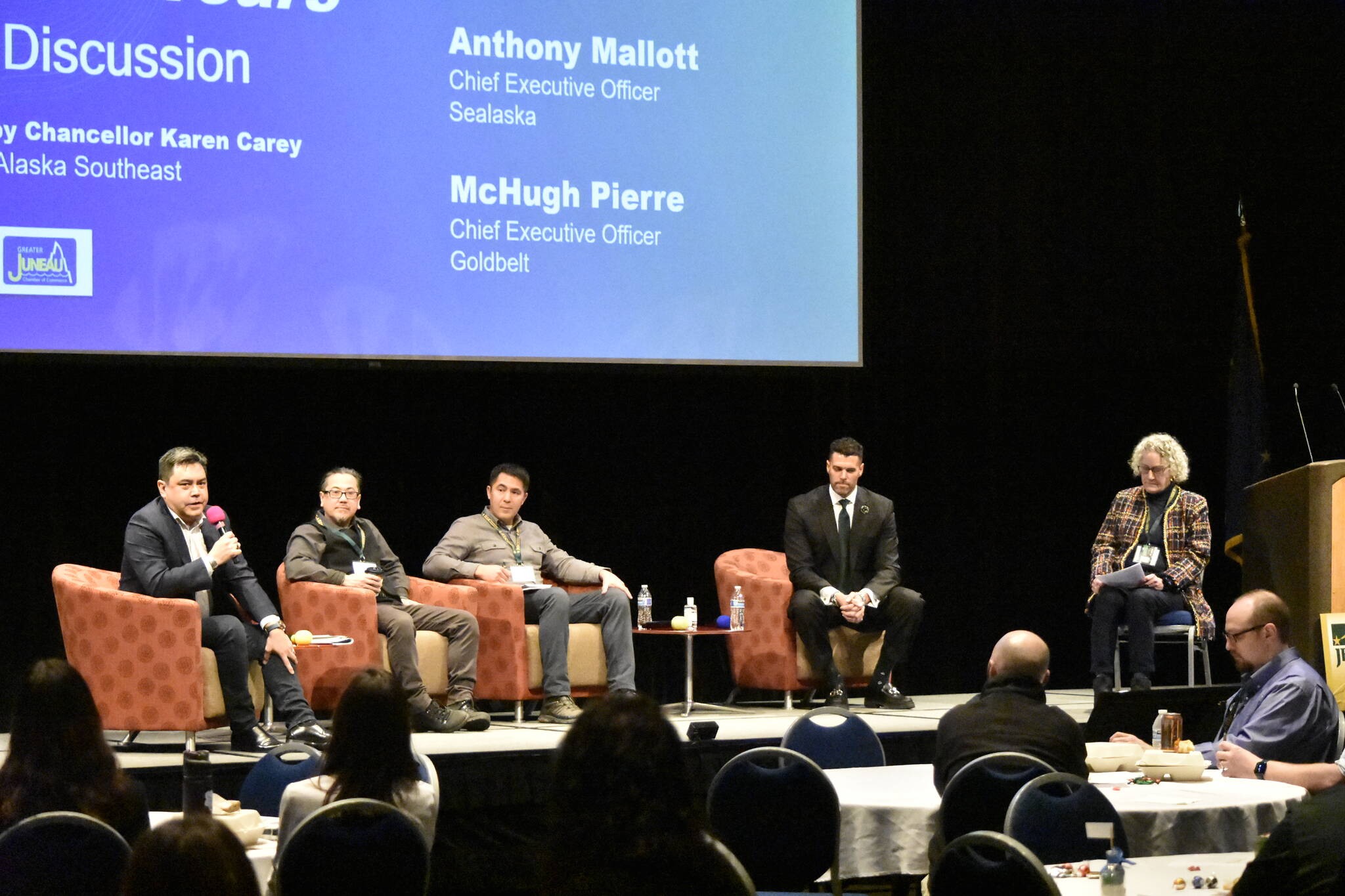Looking back on 50 years of the Alaska Native Claims Settlement Act, leaders of Juneau’s Alaska Native corporations said there’s still a lot of work to be done.
“Have we realized the vision of our forebearers?” asked Chairman of Goldbelt Inc.’s Board of Directors Todd Antioquia “The answer is absolutely not.”
In a panel held Thursday during the Juneau Economic Development Corporation’s Innovation Summit at Centennial Hall, Antioquia and Goldbelt President and CEO McHugh Pierre were joined by Sealaska Corp. CEO Anthony Mallott and Board of Director’s Chair Joe Nelson to discuss the past and future of Alaska Native corporations.
“The 50-year history of ANCSA is not really a 50-year history, it’s really a 10,000-year history,” Mallott said.
Panel members said that what sets Native corporations apart is their commitment to place and community. Native corporations still have a fiduciary duty to make money but the corporations take pains to reinvest that money in the community, they said. Mallott said corporate leaders met with tribal elders in the 1980s and asked what they expected of Sealaska. At the time, Mallott said, Alaska Native language was in decline and there were no Native dance groups.
“They said everything is about our grandchildren. We want them to have our song and dance, our language, our pride in who we are,” Mallott said.
[Alaskans laud Violence Against Women Act reauthorization]
The contrast between the current office look of the Sealaska Building and the more traditional look of the Sealaska Heritage Institute was an example, Mallott said, of where the corporations are going. Mallott said. When Sealaska first started they were advised to build a sleek building and have a corporate logo designed by a Seattle-based firm, but in time the corporation has been able to define itself on its own terms.
The corporations have put significant funding toward cultural revival, and now sponsor Indigenous language and cultural education in Juneau’s schools as many Native languages are considered endangered.
Panelist repeatedly emphasized the commitment to Southeast Alaska, and noted how the corporations’ investments helped not only tribal citizens but the entire community where they operate.
“We are unique separate entities,” Pierre said of Juneau’s two corporations. “But we have that overlapping responsibility to our community.”
But there was still work to be done, panelists said. Nelson said Native corporations had worked hard to provide health care for their people and were working with both the state and federal governments for tribal compacting in education.
“We are delivering health care to everybody,” Nelson said. “In this next generation we intend to move into education.”
Preserving the Indigenous way of life was also a priority, panelists said, and corporations were working hard to preserve their lands.
“ANCSA is so tied to subsistence and subsistence is not fixed,” Mallott said. “We could spend the next 50 years just trying to fix our traditional way of life.”
In his remarks, Nelson drew the history of ANCSA all the way back to the 18th Century, and all the panelists referenced the fact Alaska Native people have been in Alaska for a very long time and intended to remain.
“We’ve only not owned this place for a few hundred years,” Mallott said.
• Contact reporter Peter Segall at psegall@juneauempire.com. Follow him on Twitter at @SegallJnuEmpire.

